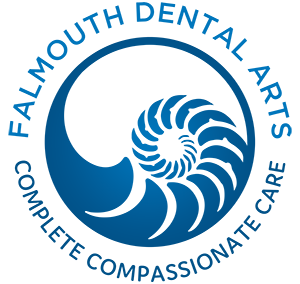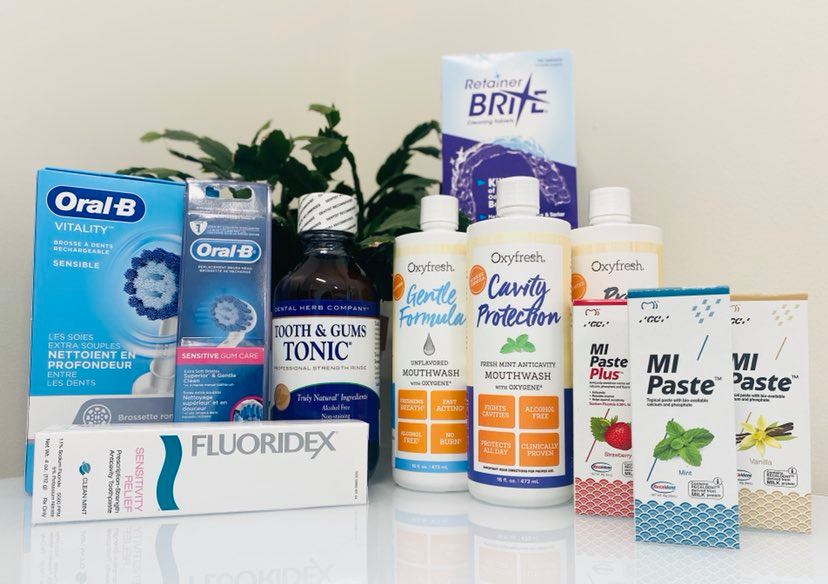
Sep 20, 2022
Dental Hygiene Products We Recommend to Our Patients
Here at Falmouth Dental Arts, we endorse and recommend a variety of professional products to our patients. “Based on our team’s many years of combined experience, we have developed a list of products we think are particularly effective at supporting our patients’ home dental hygiene routines and keeping their teeth and gums healthy in-between visits,” says Ashley Landry, Clinical Director, and Dental Hygienist at FDA. Here’s more information about the products we think can give an extra oomph to your oral health care!
Mouth Rinse
Oxyfresh is a gentle but powerful mouthwash that uses natural ingredients like mint to help keep your breath fresh all day. Oxyfresh is alcohol and dye-free, naturally sweetened, and made in the USA. It’s specially blended with Zinc and Oxygen®, a proprietary bad-breath fighter, to promote oral health while neutralizing bad breath. We offer Oxyfresh in 3 different versions: a gentle mint-flavored Pro-Formula, non-flavored Gentle Formula, and Cavity Protect with the added benefit of fluoride.
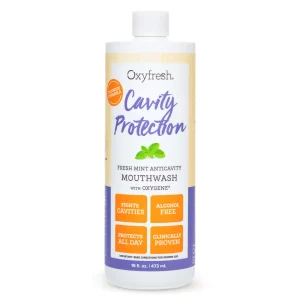
Tooth & Gums Tonic is a natural, professional-strength mouth rinse formulated to reduce oral bacteria and inflammation with pure essential oils. This alcohol-free rinse is blended with essential oils and herbs such as Echinacea and Gotu Kola, known for their anti-inflammatory and breath-freshening properties – a great alternative to other prescription mouth rinses!
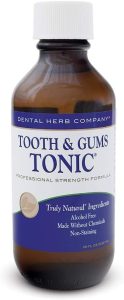
Toothpaste
MI Paste and MI Paste Plus is uniquely-formulated toothpaste fortified with calcium, fluoride, and phosphate that helps replace beneficial minerals lost from the tooth’s structure. MI Paste helps to prevent decay, sensitivity, tooth erosion, and tooth wear while restoring enamel gloss. A great product for patients who experience dry mouth and hypersensitivity as well as for those receiving orthodontic treatment.
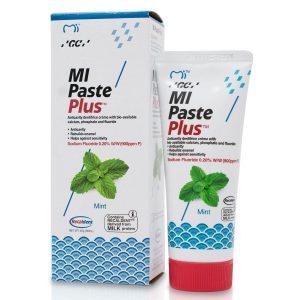
Fluoridex is prescription-strength fluoride toothpaste designed for use at home. It helps to prevent tooth decay and reduce harmful bacteria. Fluoridex is a great addition to your home care routine that helps to strengthen the enamel, reduce tooth sensitivity, and protect your teeth. Used over time, Fluoridex can help strengthen tooth enamel and prevent cavities.
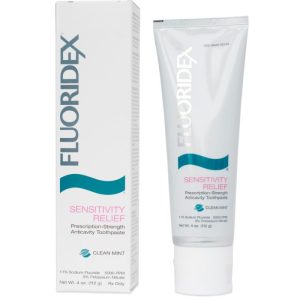
Retainer Cleaner
Retainer Brite is a great way to keep your night guard or other removable appliance, such as Invisalign, clean and ready for daily use. The specially-formulated tablets help protect and preserve appliances while also gently cleaning them. They are simple to use and kill up to 99% of common odor-causing bacteria. They also work to eliminate the cloudy film and plaque buildup when used to clean your retainer every day.
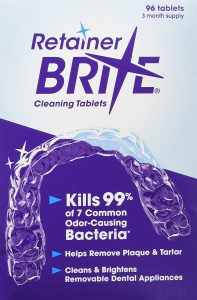
Toothbrushes
Oral B Electric Toothbrushes are designed to give you the best possible tooth cleaning at home. Electric toothbrushes effectively remove plaque while being gentle on your gums. We recommend these electric toothbrushes to our patients for a successful home care routine as they efficiently reduce plaque and prevent gingivitis.
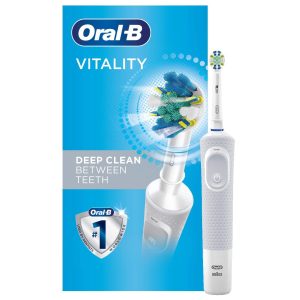
If you are interested in trying one of the products listed above or are wondering which one might be right for you, our team of dental professionals is happy to make a recommendation. Ask us any questions you might have at your next appointment or give us a call at 207.781.5900!

Aug 12, 2022
At Falmouth Dental Arts, we’re all about our patients’ comfort! From start to finish, we want your entire experience to feel comfortable both physically and emotionally. Many patients feel anxiety around their oral health care appointments and we’re here to help. That’s why we approach dentistry with the whole body in mind, so we can better educate and communicate with our patients. Our goal is to create a partnership where you feel heard and respected. So let us help you relax and receive the best oral health care possible! Here are some of the ways we support our patients to find their inner Zen!
It all starts when you walk through the door. From our friendly front desk staff to our comfortable waiting area, we have created an environment that is meant to help soothe and relax you. We want to make each visit to the dentist as calming and stress-free as possible. We will always explain what to expect during your visit and our up-to-date anesthesia techniques make dental treatments a breeze.
If you are feeling nervous before or during your visit, we recommend that you try relaxation techniques, such as breathing and visualization. Taking slow, deep breaths and visualizing yourself in a peaceful, relaxing place is helpful for many people. Also, many patients like to have something to distract them and bring their earbuds to listen to music or a podcast during their appointment. Breathe in, breathe out…and find what works best for you!
If you experience anxiety during dental procedures, please discuss this with Dr. Brunacini or Dr. Karagiorgos, or another member of the FDA team as we have options to help you stay calm, cool, and collected. We offer nitrous oxide as well as anxiolysis sedation for our patients who need a little more help with staying comfortable and relaxed before and during their visits. Patients that have mild to moderate dental anxiety are good candidates for sedation, as well as patients that have a harder time getting numb.
So…relax! We’re here to help make your oral health care experience supportive, soothing, and comfortable! If you’re interested in learning more about sedation options or other ways for you to prepare for your next dental visit, give us a call at 207.781.5900 to schedule your baseline appointment.

Aug 11, 2022
Summer is a time to kick back, relax, and enjoy, but it’s still important to keep up with your oral health routine, even during the hottest days. Here are some tips to keep your pearly whites in tiptop shape during the dog days of summer and beyond.
1) Skip the Sugary Drinks
Instead of reaching for a sugary drink to quench your thirst, stick to beverages with no added sugar whenever possible. Skip the soda (not only do sodas have high sugar content, but the carbonation is also acidic and can harm tooth enamel). While sports drinks contain electrolytes, which are helpful in preventing dehydration, did you know that they also contain more than 30 grams of sugar and 250 grams of sodium? Stick to sugar-free versions instead.
2) Drink More Water
A good rule of thumb is to drink half your body weight in ounces of water. Some ideas to help you reach your water goal are to find an insulated, refillable water bottle you like, infuse your water with lemon or use flavor drops for a little pizazz. Drinking is not only good for your metabolism, it’s also good for your teeth!
3) Prevent Tooth Discoloration
Many of us love an iced coffee or tea on a hot day but if you drink them frequently, there is a chance this can lead to tooth discoloration. Other summer favorites like cola, red wine, grape juice, cranberry juice, and blueberries are also common causes of tooth staining.
There are a few things you can do to keep your smile whiter, however, such as adding milk to your iced coffees and drinking out of a straw. It is also helpful to drink a glass of water after consuming one of these foods or beverages or rinse with a mouthwash. If you are concerned about the stains you already have, we’d be happy to discuss your options for teeth whitening. We offer both in-office whitening and at-home options and Dr. Brunacini or Dr. Karagiorgos would be happy to recommend an option that is best for you.
4) Don’t Bite the Ice
We know how satisfying it is to chew the ice left in the bottom of your drink, but this is a common cause of tooth breakage. If you are looking for a safer alternative, try adding crushed ice to your drinks instead. Try mixing ice with your beverage of choice or some fresh fruit in a blender and until smooth.
5) Protect your lips with SPF Lip Balm
Any time you are outside enjoying the sun, remember to wear sunscreen on any exposed areas, including your lips! Choose a lip balm with an SPF of at least 30, and reapply often, especially after swimming or drinking.
6) Keep Your Regular Hygiene Appointments
We know summer gets busy, but the best way to ensure good oral health in any season is to keep your regular hygiene appointments. If you have any questions about your oral health or need to schedule an appointment, call us today at 207.781.5900.
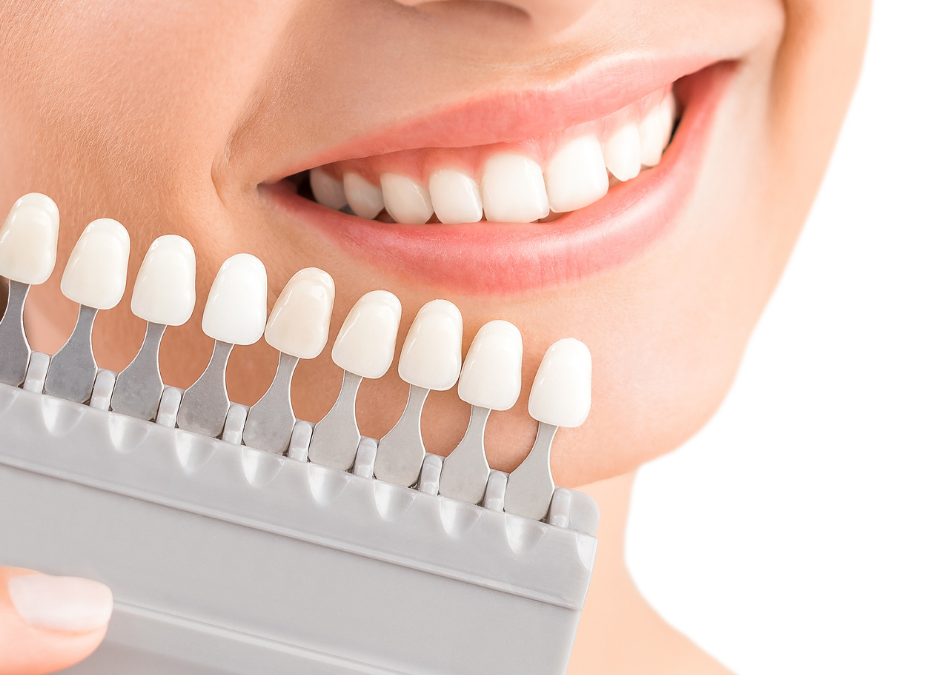
May 13, 2022
The process of getting a crown just became a whole lot easier for our patients! The team at Falmouth Dental Arts is excited to offer same-day crowns, also known as Dentistry Powered by CEREC®—(Chairside Economical Restoration of Esthetic Ceramics). With this advanced technology, we can now provide same-day crowns and other dental restorations right in our Falmouth, Maine dental office. The CEREC® Primemill, developed by Dentsply Sirona, is a state-of-the-art piece of equipment that allows us to mill, bake, and stain your new crown all in one visit – so there is no more need for a temporary crown. Because of this exciting upgrade, getting a crown will now be a faster and more comfortable experience. The cost of same-day crowns is also on par with traditional crowns. Always seeking to expand our knowledge in the field, our team has participated in extensive training to be able to offer this convenient new option to our patients. Let’s take a deeper look at what this technology means for you, our patients.
Benefits of Same-Day Crowns
We are pleased to be one of just a handful of family dentistry practices in the Portland, Maine area to offer same-day crowns, as they offer many benefits for our patients:
- Less time at the dentist
- A permanent solution in just one visit – no need for temporary crowns
- Minimally invasive
- Highly precise and custom-made for an optimal fit
- Natural-looking
- Made from safe material
- Durable and long-lasting
How Do CEREC® Dental Crowns Work?
This new technology is exciting for many reasons, one of them being how much easier it will make dental restoration for our patients. The same-day crown procedure is a simple four-step process:
1) Scan
We use digital scans to create a 3D model of your teeth. This is an easier process than traditional impressions, which means less discomfort for you.
2) Design
We use CEREC® Software to design your customized restoration right here in the office. The designs are extremely accurate and can be created very quickly.
3) Manufacture
Next, the design is sent to the milling machine to create your custom crown. The process is very precise and allows us to create a very smooth and realistic result in just one visit.
4) Heat
Your custom ceramic dental crown is then sintered (baked) and glazed using a special sintering furnace made just for dental restorations.
Like any dental restoration, your new ceramic crown may be sensitive for the first few days after your visit. If you have any questions about same-day crowns, would like to make an appointment, or want to become a new patient, give us a call, or fill out a new patient form today!
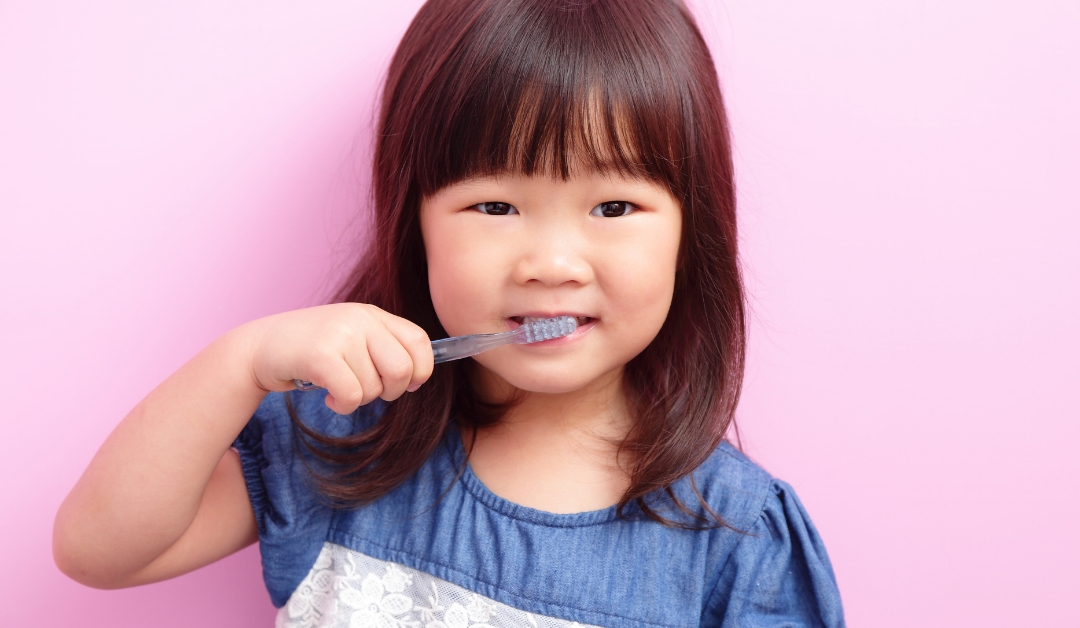
Feb 4, 2022
February is National Children’s Dental Health Month, which makes now the perfect time to review how to care for your little or big kids’ teeth at home. This month-long awareness campaign was created by the American Dental Association to bring together dental professionals to promote the benefits of children’s oral health. Here at Falmouth Dental Arts, we believe that children should be actively involved with caring for their own teeth. Good oral habits start early and it’s important to create positive memories for your little ones about their dental experience. Our compassionate team of dental professionals is always happy to spend time educating both parents and children on good dental health habits such as scheduling check-ups and creating a daily flossing and brushing routine. Read on for a few of our favorite tips!
Tips for Babies and Toddlers
- At the first sign of a new tooth, use an infant toothbrush with a pea-sized amount of toothpaste and gently brush those mini pearly whites. Look for toothpaste that is approved by the American Dental Association for use with babies – if you need product recommendations, let us know!
- When your baby has two teeth side-by-side (usually the bottom center two teeth), you can begin flossing between them.
- Schedule your babies’ first dental check-up by 12 months of age. You can expect that during the first visit we will introduce your child to our office, the dental chair, and any tools and products that we will be using during a routine cleaning appointment. We start by simply taking a look into your child’s mouth to get them accustomed to this routine while we assess their teeth and gums. Our warm and friendly professional team is skilled at taking each step at a pace that is comfortable for your child. Your child’s first visit may also include a fluoride treatment, depending on his or her age, needs, and readiness.
Tips for Big Kids
- Continue to supervise your child’s brushing habits up to age 8 as they may not always brush long enough and may need to be reminded not to swallow the toothpaste. Replace his or her toothbrush every 3-4 months with a theme or color of their choosing. Reinforce that they should be brushing twice a day, for two minutes each time.
- Teach your child or teen about the importance of both hydration and good nutrition. Explain why healthy snacks like fruits and veggies as well as calcium-rich foods like yogurt and cheese are good for growing teeth and bones.
- Make sure your big kid flosses and swishes with a fluoride rinse once per day.
- Schedule your child’s dental appointments two times per year or more, if recommended. Dr. Brunacini and Dr. Karagiorgos love seeing the next generation of smiles coming through the office doors and helping them to establish healthy dental habits early on!
If you have any questions at all about your child’s dental health or need to schedule an appointment, give us a call at 207.781.5900.

Jan 11, 2022
Wintertime in Maine can feel like the longest of the four seasons, but luckily there are a variety of sports and recreational activities for adults and kids to choose from to keep busy during the colder months. Whether you are competing on a winter sports team or getting outside for some fun and fresh air, it is important to take precautions to keep yourself safe. This includes wearing protective gear when necessary and knowing what to do in the case of a dental injury. If you have any questions about how we can help you protect your smile this winter, feel free to talk to your team at Falmouth Dental Arts, as we are your partners in dental health. In the meantime, read more about winter activities and dental safety below.
Protective Gear
In addition to wearing a helmet to protect your head, wearing a mouthguard is your first line of defense against dental injuries. We support the American Dental Association’s recommendation that mouthguards be worn when participating in the following list of winter sports and activities, even if they are not required:
- Wrestling
- Basketball
- Ice Hockey
- All Collision, Contact, and Combat Sports
- Downhill Skiing and Snowboarding
- Ice Skating
- Sledding
Types of Mouthguards
Make sure to choose a mouthguard that is approved by the ADA and designed for your specific sport or activity. There are a few different types of mouthguards you can choose from:
- Stock Mouthguards – Stock mouthguards come pre-formed and ready-to-wear in various sizes. Stock mouthguards tend to be inexpensive but do not offer a custom fit.
- Boil and Bite Mouthguards – These mouthguards are softened in hot water before wearing and are placed in your mouth to create an impression of your teeth and bite before they harden.
- Mouthguards for Braces – It is important to choose a mouthguard that is designed specifically for those who wear braces.
Have questions? Talk to us about selecting the mouthguard that is best for you. We are here to help!
Caring for Your Mouthguard
Store your mouthguards in a case to keep them protected from bacteria, pets, and loss. Clean them regularly with toothpaste, mild soap, or baking soda. Rinse thoroughly and dry before storing them in their case. Replace them as soon as they get torn, thin from wear, or no longer fit well.
What to Do if You’re Injured
If a dental injury does occur, call our office right away at 207.781.5900 to schedule an appointment. Our team of compassionate dental professionals will help you with a treatment plan and coordinate with your other health care professionals as needed. If it is outside of our regular business hours, when you call our office line you will be given the option to get in touch with Dr. Brunacini or Dr. Karagiorgos. In the event of a head injury or any other type of serious injury, please contact your physician as soon as possible or go to your nearest emergency room.







